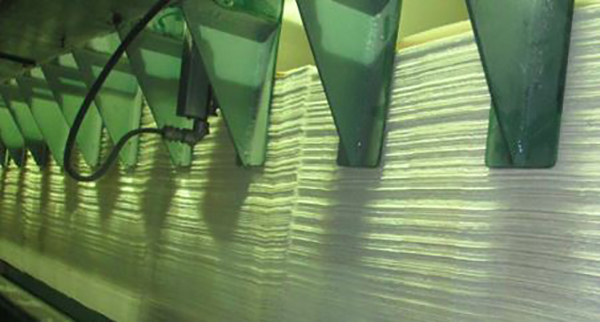DISSOLVING PULP

DISSOLVING PULP
Dissolving pulp, also known as specialty cellulose, is a chemically refined bleached pulp in which hemi-cellulose in addition to lignin are removed from the wood. Dissolving pulp has unique properties, including a high purity of cellulose and uniform molecular-weight distribution. Dissolving pulp is used in a wide variety of applications, such as the production of rayon textile fibres, acetates, cellophanes, tire filaments, filters and various chemical additives. It is also used by pharmaceutical companies and the food industry as a binding agent. Dissolving pulp is generally categorized into either rayon grades of dissolving pulp or specialty grades of dissolving pulp, based on its purity and other characteristics. Rayon, as the single largest application of dissolving pulp, is used in a variety of end products including textiles, wipes and hygiene products, home furnishings, medical and surgical products and packaging materials. In the textile industry, rayon is considered to be a substitute for cotton with positive characteristics such as dryability and arability. Specialty grades of dissolving pulp are distinguished from rayon grades of pulp based on their levels of cellulose purity, as well as their brightness and viscosity.
PRODUCTION OF DISSOLVING PULP
The production process for dissolving pulp involves the chemical extraction of fibres from wood to obtain cellulose. To produce rayon grades of dissolving pulp requires the debarking and chipping of logs, the cooking and de-lignification of the resulting wood chips whereby the lignin and hemicellulose are separated from the cellulose, bleaching the cellulose with various bleaching agents, and finally drying the wet dissolving pulp and compressing it into sheets. To create specialty grades of dissolving pulp additional processing steps are required, which increase the purity level of the cellulose.
MARKET
Historically, demand for dissolving pulp had been concentrated in developed markets. Demand for pulp and dissolving pulp has historically been determined by the level of economic growth and has been closely tied to overall economic activity. Demand for dissolving pulp is expected to continue to grow in Asian markets as capacity for VSF and other cellulose-based products grows, while at the same time demand develops in other markets. The growth in VSF production capacity in China has led to increased demand for dissolving pulp. We believe the long-term growth prospects for the world textile and fibre markets should continue to improve with increasing population and a growing middle class in certain markets. Demand for manmade fibre has increased while demand for cotton has continued to decline. VSF demand is anticipated to grow 5% to 6% per year as reported in The Fiber Year 2016.